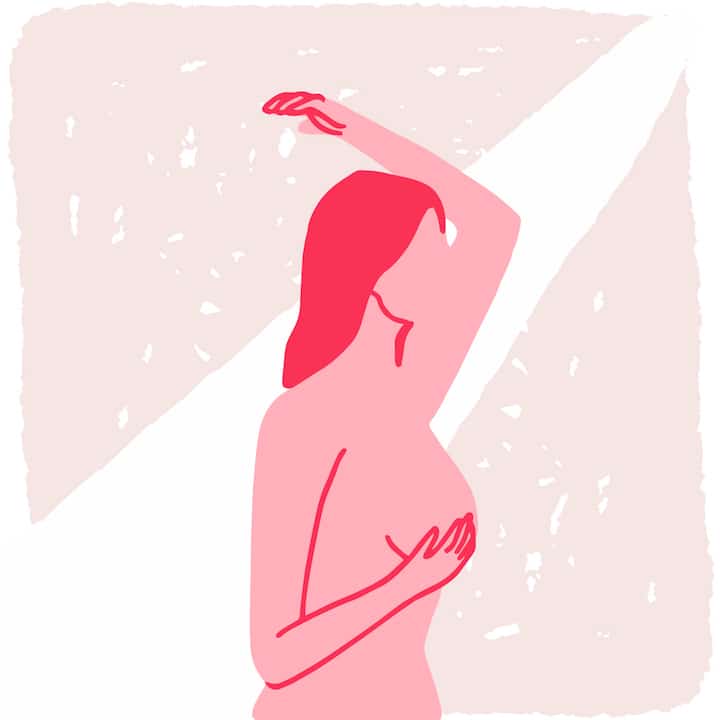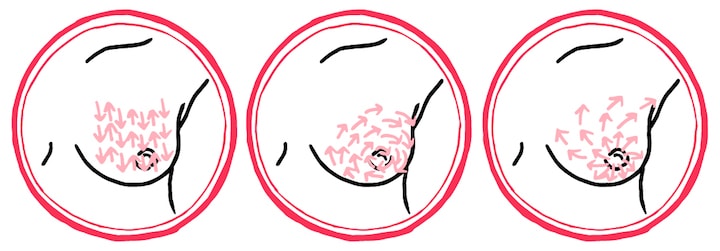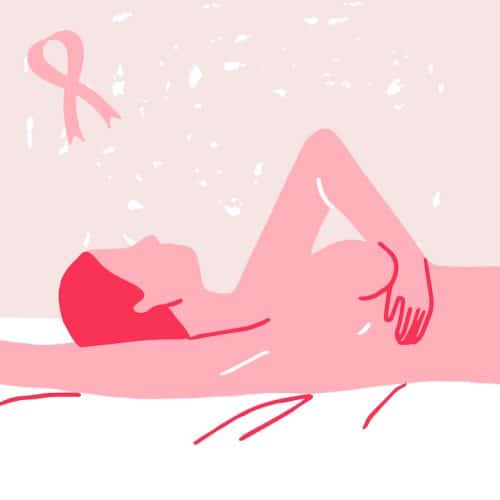Learn how to check yourself and get to know what “normal” feels like to you and your body.
It’s never easy to acknowledge the impact of the “C” word, but in the developed world, one in eight women develop breast cancer at some point in their lives. It’s the most common type of cancer in the world, and last year alone two-million women were given this diagnosis*.
October is Breast Cancer Awareness month and whilst we’re surrounded by pink advertising, pinkathons, pink afternoon tea-sets, pink cosmetics deals, and pink discount deals, health and awareness still take top priority. The only way to make sure you and your breasts are fine and dandy is early detection. We’re not talking annual mammograms, but more about feeling your boobs on a monthly basis, knowing what’s your normal and what’s not, so that every soreness, dimple, discharge or twinge sends a clear signal to the brain. But before we school you in breast self-examination, let’s lay down the basics.
(*Source: American Cancer Society)

Who is at risk?
Anyone with boobs.
That’s not just women but men, transgender, cisgender, basically anyone with breast tissue can get cancer of the breast. It’s definitely far more common in women but male breast tissue has similarities to female tissue and the American Cancer Society estimates that one in 1,000 men suffer from breast cancer at some point in their lives.
Another breast cancer myth is that the disease is all down to genetics. Did you know that 80% of the people who get breast cancer don’t have any family history? So, let’s not only blame the BRCA1 and BRCA2 genes which raise the breast cancer risk by a whopping 56%. The grave diagnosis has got a lot to do with your age, lifestyle, oestrogen and progesterone exposure, alcohol use or abuse, unhealthy body weight, activity level and environment.
The changes to watch out for:
Breasts are lumpy. When I first started doing the monthly exams, I would live in constant fear of being a living ball of tumours. But after a couple of months, you get the hang of what’s your normal, what your boobs look and feel like at a certain point in your menstrual cycle, so when something’s off, you know to alert your doctor.
When to do a breast self-examination?
For menstruating women, the best time for a self-exam is the fourth or the fifth day of your cycle, that’s when the pre-period breast thickening has subsided so there will be no unusual breast tenderness. The general rule of thumb is to check your breasts for irregularities at the same time every month.
Look out for these signs
- Any hard, irregular blob which does not move with your fingers or the rest of the breast tissue.
- Any lumpy/bumpy swelling or dimpling, even changes in the texture of your boob or towards the armpit.
- Changes in shape or size of one boob.
- Nipple discharge when you’re not pregnant or way past breastfeeding.
- Swollen lymph nodes in the armpit or around the neck bone.
- Thickening of the areola, any redness or scaliness in this area.
If something does strike a nerve, don’t go into panic mode, keep calm and know that most lumps are harmless tumours, but consult your doctor for further tests.
How to perform the breast self-check correctly:

1. Lie down on your back on the bed or stand and put your hand above the head. Use the index, middle and ring finger of the other hand to begin the exam.
2. Mentally divide the breast into four quadrants and then start by pressing your fingers firmly into the armpit using circular motions while coming towards the nipple.

3. Check one part of the breast at a time and then work your way around the entire boob.
4. Repeat the process on both the breasts.
5. Check firmly under your armpits for any swollen lymph nodes – they’ll feel like peas under your skin.
6. Squeeze the nipples to see if there is any abnormal discharge. By abnormal discharge, we mean any discharge or blood.

7. Stand in front of the mirror and observe the shape, size and texture of your breasts. Is there a change? Anything suspicious like bumps, rashes or retracted nipples which don’t look normal, should be reported to the doctor straight away.
That’s it, keep a close watch on your twins and stay healthy!
Editor’s Note: This post was originally published in October 2018 by Nikita Mishra, and was updated in September 2020.
All images are property of Sassy Media Group





 Eat & Drink
Eat & Drink



 Travel
Travel



 Style
Style



 Beauty
Beauty



 Health & Wellness
Health & Wellness



 Home & Decor
Home & Decor



 Lifestyle
Lifestyle Weddings
Weddings





